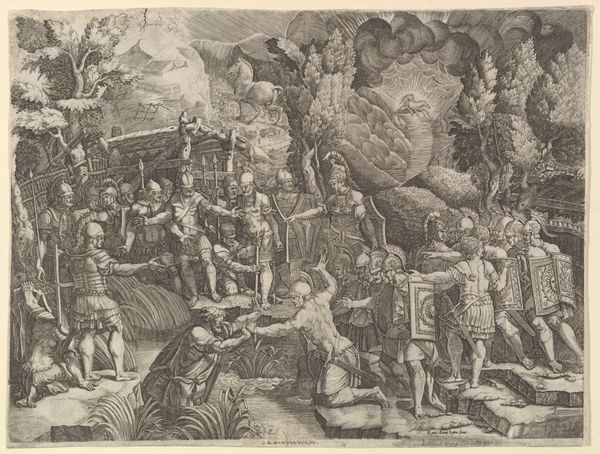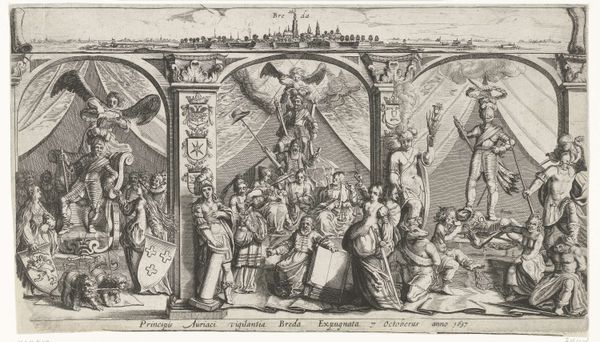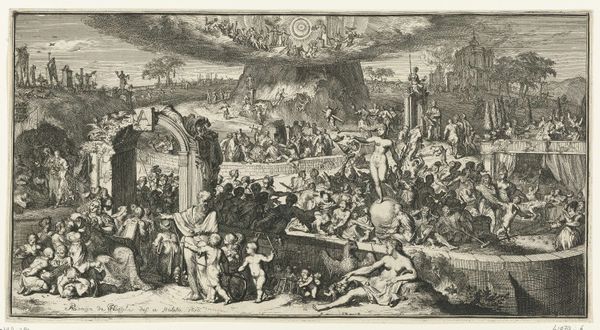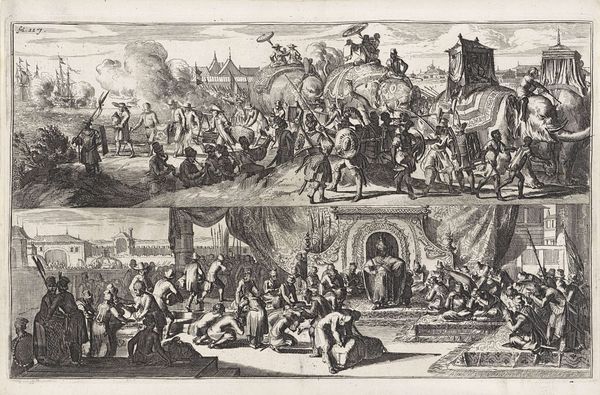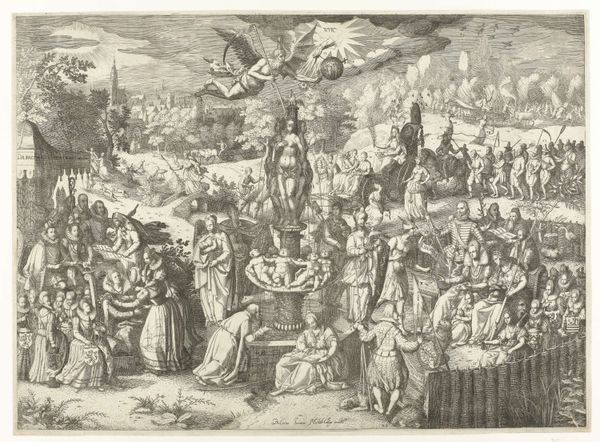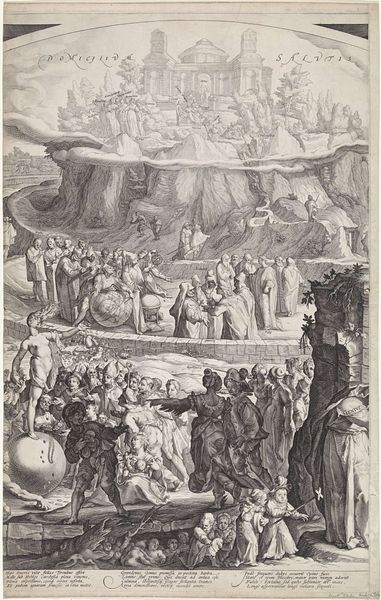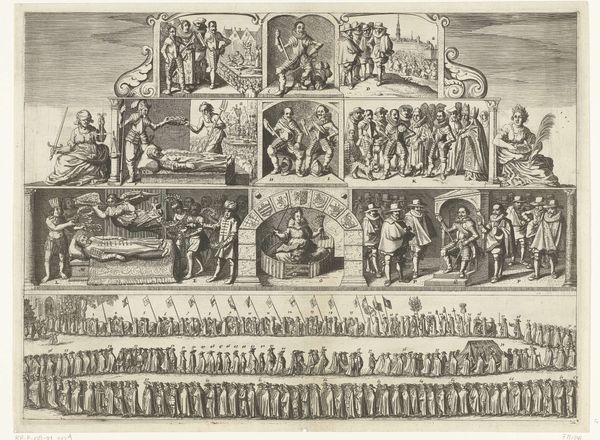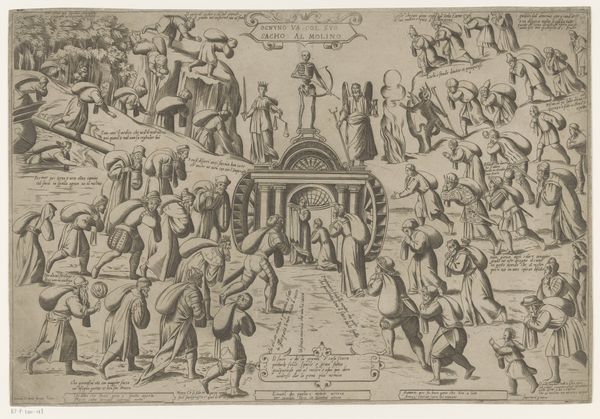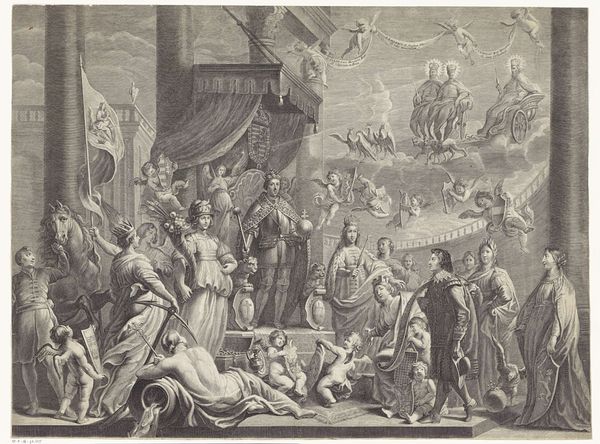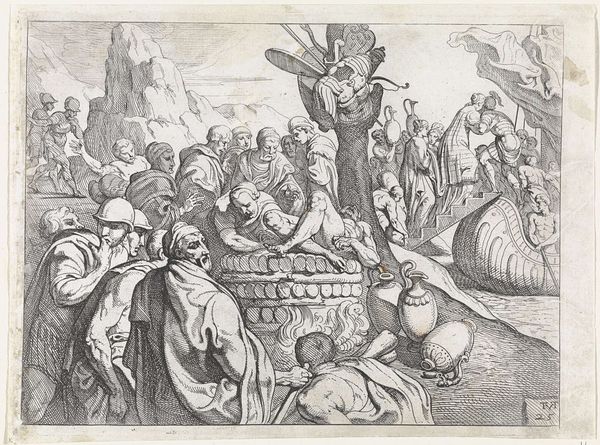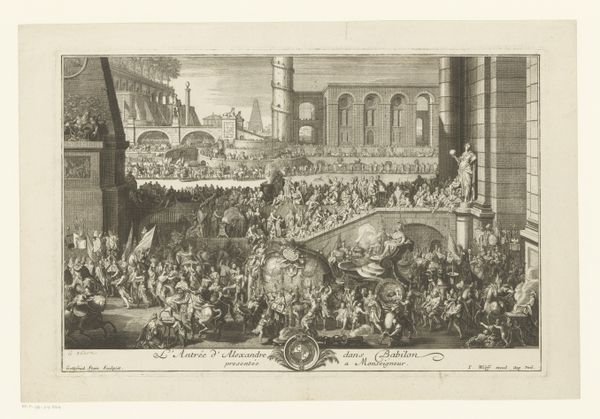
print, engraving
#
ink drawing
#
allegory
#
narrative-art
#
baroque
#
pen drawing
# print
#
pen sketch
#
perspective
#
figuration
#
line
#
history-painting
#
engraving
Dimensions: height mm, width mm
Copyright: Rijks Museum: Open Domain
Curator: Welcome. Here we have an engraving titled "Exemplaar van de onder RP-P-1887-A-12391 beschreven prent," created sometime between 1581 and 1631 by Jacob Matham. Editor: My first impression is of overwhelming detail and a rather sombre tone. It’s dense with figures and a palpable sense of gravity. Curator: Indeed. Note the intricate linework and the way Matham employs perspective to create a sense of depth, guiding the eye from the foreground's bustling figures to the distant, ethereal cityscape above. It’s an exquisite demonstration of Baroque draftsmanship. Editor: I see not just skilled draftsmanship, but an encoding of social commentary. Considering the historical context, these multitudes likely represent various strata of society on a pilgrimage, all seemingly directed towards an elusive, heavenly ideal. Curator: Perhaps. Or is Matham primarily exploring the aesthetic possibilities of allegorical composition, with its structured planes? Consider how the upper registers, framed by reclining figures, balance the energetic activity below. Editor: Structured perhaps, but it’s hard to ignore the inherent power dynamics at play. Who gets access to the ‘heavenly city’ and who is relegated to the chaotic foreground? The positioning alone signifies privilege and marginalization. It makes me think about access and societal participation then and now. Curator: Certainly, readings informed by social critique are valid. But also see the skillful modulation of light and shadow which lends dramatic weight and compositional unity to the piece. Note also the precise delineation of each figure’s drapery, conveying texture and form. Editor: But those very figures represent societal anxieties during a period of religious and political upheaval, no? The allegory speaks to the desire for order in chaos, a desire invariably entangled with questions of authority and control. I think Matham’s work demands this historical consideration. Curator: Ultimately, the engraving offers a rich ground for interpretive possibilities, poised within its artful execution. Editor: An execution embedded, inescapably, within the narratives of power it depicts and the time period in which it was created. It leaves us questioning who and what is prioritized by those historical forces.
Comments
No comments
Be the first to comment and join the conversation on the ultimate creative platform.
